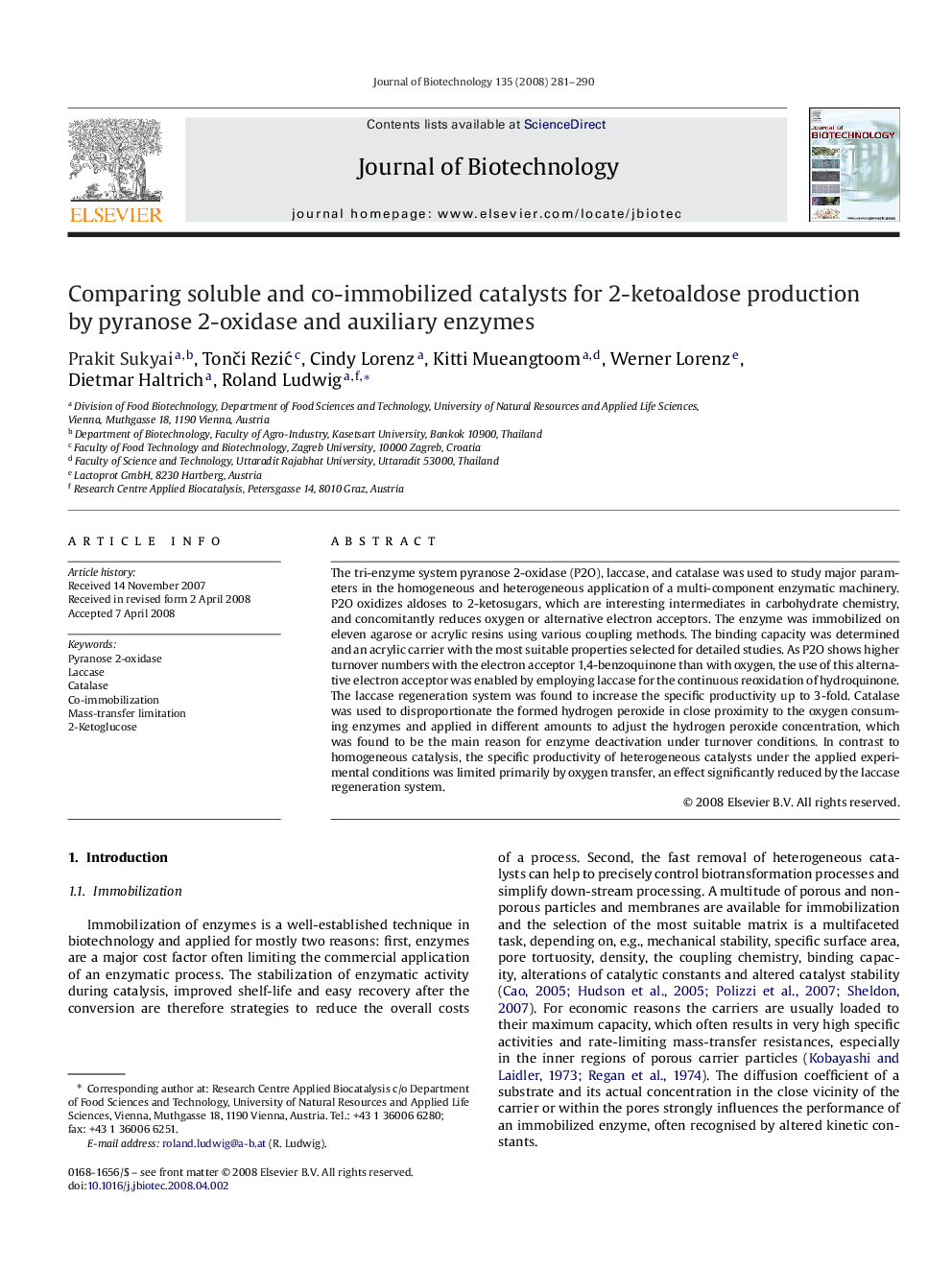| Article ID | Journal | Published Year | Pages | File Type |
|---|---|---|---|---|
| 25032 | Journal of Biotechnology | 2008 | 10 Pages |
The tri-enzyme system pyranose 2-oxidase (P2O), laccase, and catalase was used to study major parameters in the homogeneous and heterogeneous application of a multi-component enzymatic machinery. P2O oxidizes aldoses to 2-ketosugars, which are interesting intermediates in carbohydrate chemistry, and concomitantly reduces oxygen or alternative electron acceptors. The enzyme was immobilized on eleven agarose or acrylic resins using various coupling methods. The binding capacity was determined and an acrylic carrier with the most suitable properties selected for detailed studies. As P2O shows higher turnover numbers with the electron acceptor 1,4-benzoquinone than with oxygen, the use of this alternative electron acceptor was enabled by employing laccase for the continuous reoxidation of hydroquinone. The laccase regeneration system was found to increase the specific productivity up to 3-fold. Catalase was used to disproportionate the formed hydrogen peroxide in close proximity to the oxygen consuming enzymes and applied in different amounts to adjust the hydrogen peroxide concentration, which was found to be the main reason for enzyme deactivation under turnover conditions. In contrast to homogeneous catalysis, the specific productivity of heterogeneous catalysts under the applied experimental conditions was limited primarily by oxygen transfer, an effect significantly reduced by the laccase regeneration system.
